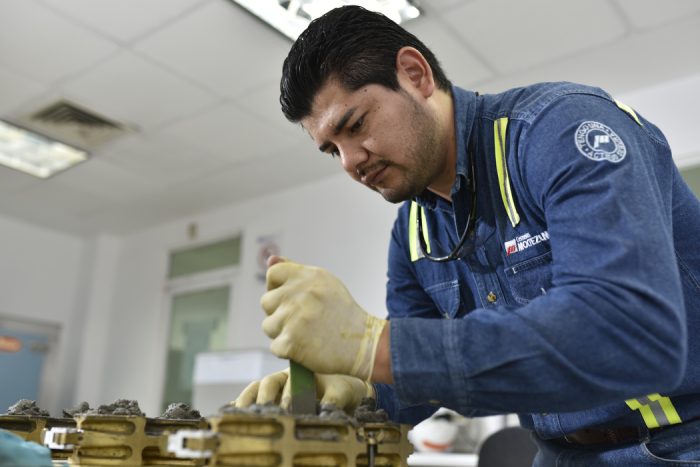Reduction of CO2 emissions through the replacement of clinker with supplementary cementitious material and grinding additives

One of the strategic objectives of Cementos Moctezuma is to implement actions to reduce CO2 emissions as part of the commitment to reduce greenhouse gases (GHG) aligned to the Roadmap drawn up for the year 2030.
The first important step for the reduction of GHG emissions in the Tepetzingo Plant, occurred in the first months of 2021, when Cementos Moctezuma began with the development of a grinding additive which, when added to the cement, managed to increase the resistance to compression at final ages in such a way that it would reduce the clinker content while keeping intact the physical-mechanical characteristics of one of our products called CPC 30 R RS.
This action was successful and in May 2021, through the use of this additive in the production of cement, an initial reduction of 5% of clinker was obtained.
The second action that was carried out had a positive impact on all the products manufactured in Tepetzingo plant, since a supplementary cementitious material known as zeolite was incorporated into the grinding process. Deposits of this mineral were located, laboratory tests were carried out aimed at guaranteeing both the reactivity of the material and the physical-mechanical characteristics of our products.
In July 2021 Cementos Moctezuma started with the first industrial test for the CPC 30 R RS. Due to the good results obtained, since September 2021 zeolite is used in the production of the various cements and mortar manufactured in the Tepetzingo Plant. The actions carried out have allowed Cementos Moctezuma to achieve an 8% reduction in the Clinker-cement factor (from January 2021 to July 2022). This reduction has two major effects:
- 6% reduction in energy consumption.
- Reduction of 9% of CO2 emissions, which means -55 kg CO2/t_cem_eq
Cementos Moctezuma will continue to work on the path to carbon neutrality.